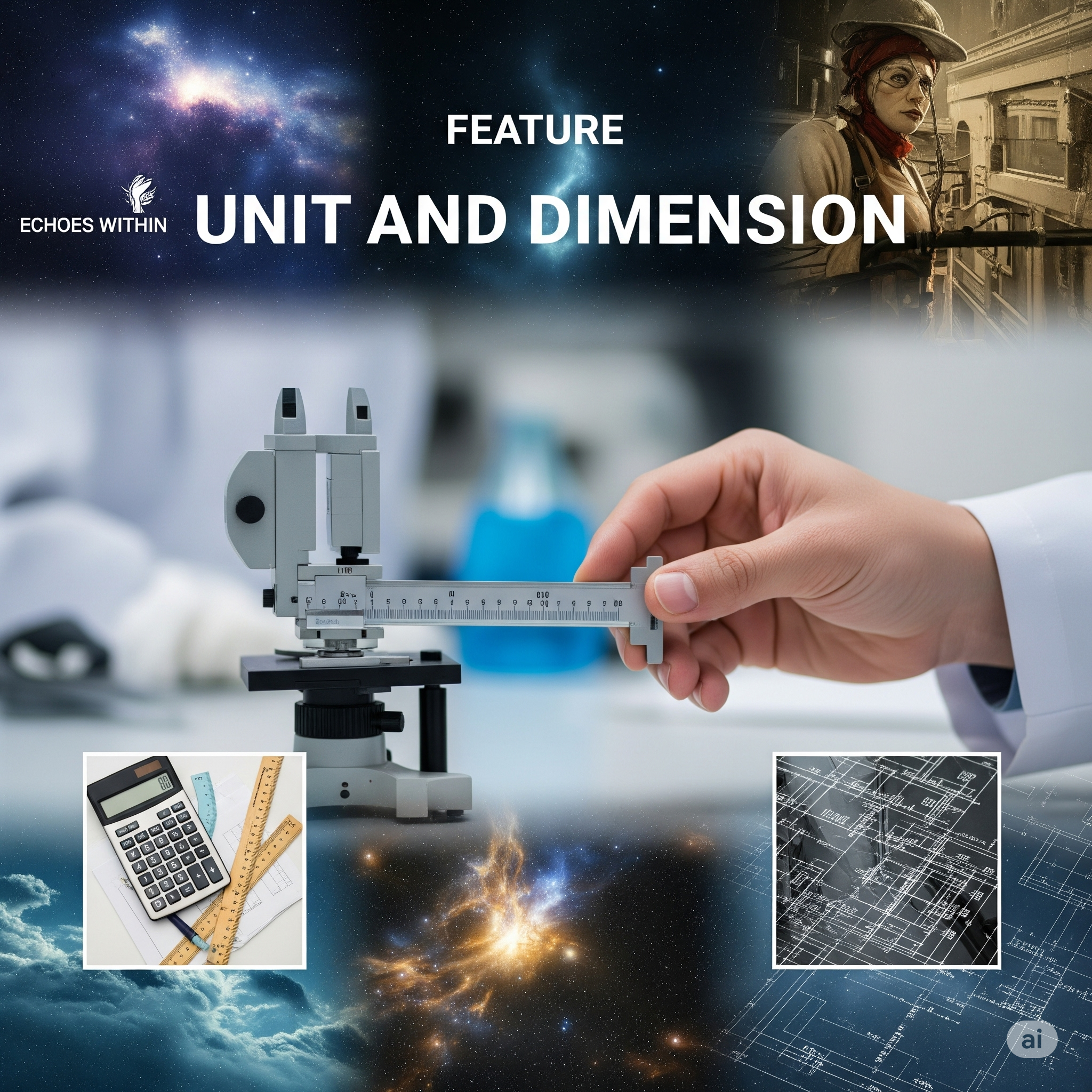
📘 Unit and Dimension: Summary Note for MCQ
“Unit and Dimension” lesson includes a Quick summary note for NEB Bridge Course students.

🔹 1. Physical Quantities
-
Fundamental Quantities: Basic quantities that cannot be derived from others.
Examples: Length (L), Mass (M), Time (T), Current (A), Temperature (K), Luminous Intensity (cd), Amount of Substance (mol) -
Derived Quantities: Quantities derived from fundamental ones.
Examples: Speed, Force, Work, Pressure
🔹 2. Units
-
Unit: Standard of measurement of a physical quantity.
⚖️ Types of Units:
-
Fundamental Units: Units of fundamental quantities (e.g., meter, kilogram, second)
-
Derived Units: Units derived from fundamental units (e.g., m/s, N, J)
🌍 System of Units:
| System | Length | Mass | Time |
|---|---|---|---|
| CGS | cm | g | s |
| MKS | m | kg | s |
| SI | m | kg | s |
🔹 3. Dimensions
-
Dimensions: The powers to which fundamental quantities are raised to represent a physical quantity.
✅ Dimension of Physical Quantities:
Examples:
-
Velocity: [M⁰L¹T⁻¹]
-
Acceleration: [M⁰L¹T⁻²]
-
Force: [MLT⁻²]
-
Work: [ML²T⁻²]
-
Pressure: [ML⁻¹T⁻²]
🔹 4. Dimensional Formula
-
Expresses a physical quantity in terms of basic dimensions: M (mass), L (length), T (time), etc.
Example:
Work = Force × Distance
→ [Work] = [MLT⁻²] × [L] = [ML²T⁻²]
🔹 5. Applications of Dimensional Analysis
-
To check the correctness of the formula (Principle of Homogeneity)
-
All terms must have the same dimensions.
-
-
To derive a relation between physical quantities
-
To convert units from one system to another
⚠️ Limitations of Dimensional Analysis
-
Cannot detect dimensionless constants (like sin, cos, tan)
-
Cannot verify if a formula has addition/subtraction of unlike quantities
-
Cannot derive equations involving more than one term added/subtracted
🧠 Important Dimensionless Quantities
-
Angle (radian)
-
Strain
-
Refractive index
-
Specific gravity
-
Poisson’s ratio
All have dimension = 1 (i.e., dimensionless)
🔢 Key MCQ Points
-
SI unit of Force = Newton (N) = kg·m/s²
-
SI unit of Pressure = Pascal (Pa) = N/m²
-
Dimensions of Energy = [ML²T⁻²]
-
Power = [ML²T⁻³]
-
Dimensional formula of Planck’s constant = [ML²T⁻¹]
-
Dimensional formula of Universal Gravitational Constant (G) = [M⁻¹L³T⁻²]
🏁 Quick Tricks
-
If you forget the dimension, break it into known formulas.
-
e.g. Pressure = Force/Area → [MLT⁻²]/[L²] = [ML⁻¹T⁻²]
-
-
Use dimensional analysis to eliminate the wrong MCQ options.
